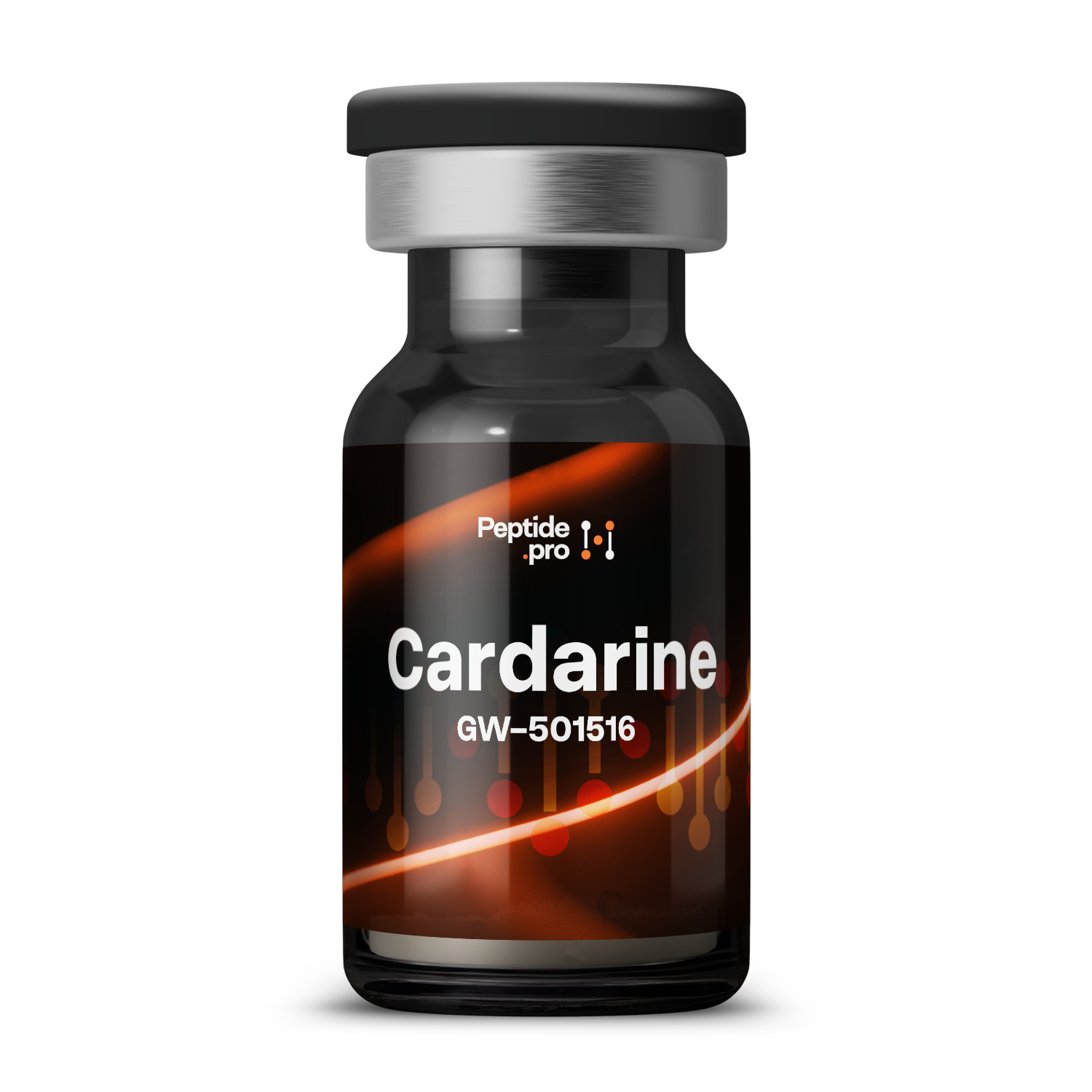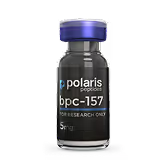GW-501516 (Cardarine)
GW-501516 (Cardarine) is a small molecule that activates a receptor involved in fat burning and energy use. In early human studies, it improved cholesterol levels and showed potential for boosting endurance by helping the body use fat for fuel. It’s used only in research on metabolism and exercise performance.
Compound Overview
About the product
GW-501516 is a small-molecule compound (chemical formula C₂₁H₁₈Cl₂FNO₃S₂) featuring a thiazole ring and dichlorophenyl and fluorophenyl moieties. It is synthesized by multi-step organic chemistry involving ring closures and halogenation reactions. Research-grade material is purified to >98 % purity via preparative HPLC and characterized by NMR and mass spectrometry. No peptide bonds or amino-acid components are present.
GW-501516 binds and activates PPARδ receptors in skeletal muscle and other tissues, upregulating genes that enhance fatty-acid oxidation and energy utilization. Activation of PPARδ also increases HDL cholesterol and may improve insulin sensitivity. The compound promotes a shift from carbohydrate toward fat metabolism under resting and exercise conditions. In humans, these effects translate into altered lipid profiles and potential endurance benefits.
The compound was studied primarily for improving lipid parameters and metabolic health. In phase I trials, GW-501516 increased HDL cholesterol, reduced triglycerides, and showed trends toward improved insulin sensitivity in healthy volunteers. It was also evaluated for potential to enhance endurance capacity in athletes, though human exercise studies remain limited. No further clinical development has occurred due to long-term safety concerns.
Cardarine side effects reported in short-term human studies most commonly included mild headache and gastrointestinal discomfort. No serious safety signals emerged in trials lasting up to four weeks. Long-term safety data in humans are unavailable, and animal studies showed dose-dependent cancer risk, precluding further development. Any investigational use should include close monitoring of hepatic and renal function.
GW-501516 is produced by conventional medicinal-chemistry synthesis, assembling its heterocyclic core and halogenated aromatic rings through iterative organic reactions. After each step, intermediates are purified by chromatography. Final compound is purified by preparative HPLC to research-grade purity and identity confirmed by NMR, LC-MS, and elemental analysis.
GW-501516 is not approved by the U.S. FDA, EMA, or other major regulatory bodies for any therapeutic indication. It is classified as “research chemical” and may be obtained only for laboratory investigations. It is banned by WADA and other sports authorities as a performance-enhancing substance. No prescription or over-the-counter products legally contain GW-501516.
Cardarine dosage in human phase I studies ranged from 10 to 30 mg orally once daily for up to four weeks. No dosing guidelines exist outside these limited trials. Any investigational dosing should adhere strictly to ethical approvals and safety monitoring protocols.
- Do restrict use to approved laboratory research settings with full ethical oversight.
- Do monitor lipid panels, liver and kidney function regularly.
- Don’t use for athletic performance enhancement—it’s prohibited and unsafe long term.
- Don’t combine with other investigational metabolic agents off-protocol.
- Q: Does GW-501516 improve exercise endurance in humans?
- A: Human endurance data are scarce; metabolic effects suggest potential but remain unconfirmed.
- Q: Why was development stopped?
- A: Long-term animal studies showed increased tumor incidence, raising safety concerns.
- Q: Can it be taken safely short term?
- A: Short trials reported only mild side effects, but long-term human safety is unknown.
For research use only. Not approved for medical use.


